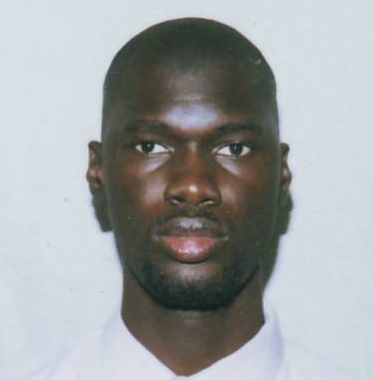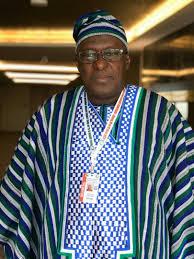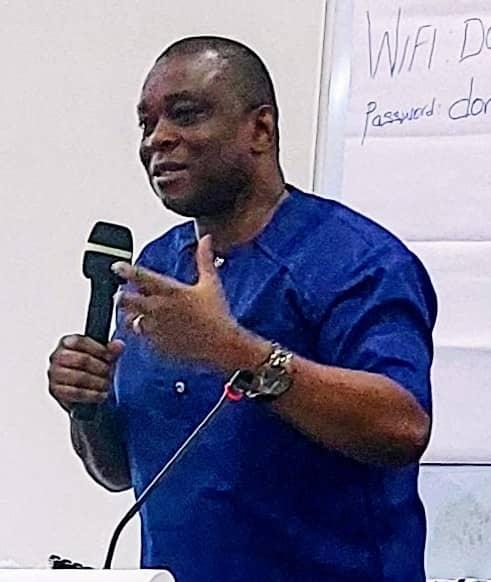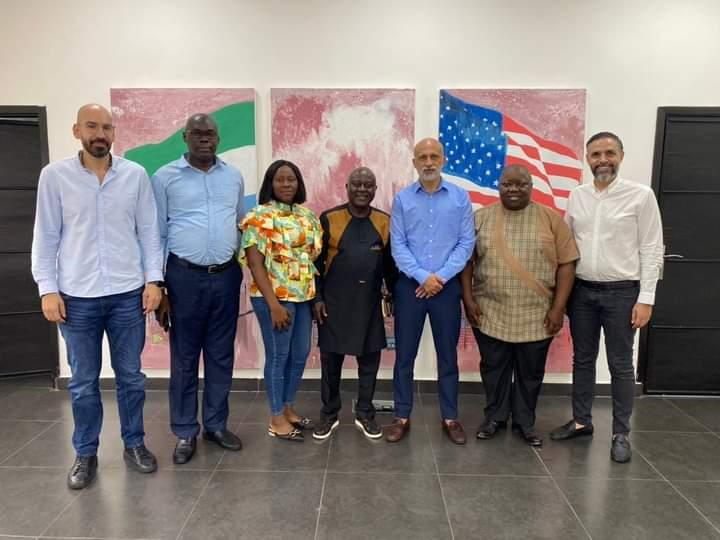Between paralegals and local courts: chiefs and conflict resolution in rural Sierra Leone
Introduction
There was unease in the air. The account of a chief who imposed a fine of Le 800,000 ($186) on a petty trader and then locked her up in his house when she could not pay did not make for easy listening. The audience of mostly chiefs and tribal leaders was visibly uncomfortable. Still, how could a law deprive them of what they felt was their sacred customary responsibility -dispensing justice. The problem, according to a non-titled member of the audience, was that chiefs rather than the parties benefitted when the former sit in judgment. Summons fees, matching summons fees, interlocutory fines, final fines and flag fees were some of the many financial burdens or benefits (depending on which side you stood) identified. Often, impoverished ‘seekers of justice’ wobbled under the weight of ‘chiefs’ adjudication’. These issues were under scrutiny at a series of meetings of chiefs and other important community leaders convened recently by one of the paralegal organisations in the country. The meetings discussed the growing number of complaints of financial exaction and other forms of abuse by ‘chiefs’ courts’ especially in light of the provisions of the new local courts act. (Photo: Sonkita Conteh)
This article will explore whether chiefs and other traditional leaders remain relevant players in conflict resolution in the face of successful legal empowerment interventions in rural areas, and a new law set to revamp the local courts system.
From overlords to ‘under-lords’
Before early European contact, political and judicial powers within individual tribal groupings were pretty much in the hands of kings or queens (as chiefs were then known) who were generally not exempt from customary law themselves.[1] They were in effect the amalgamation of modern day parliament, executive and judiciary with a cadre of important personnel assisting them.[2] First with the imposition of colonial rule and then a protectorate, the wide powers of these ‘Monarchs’ were severely curtailed resulting in their subordination to a colonial governor through a district commissioner and a change of title.[3] However, chiefs continued to exercise some form of judicial authority though subject to the control of the governor.[4] The Native Courts Act, Chapter 8 of 1933 established several levels of native courts including courts of the native chiefs (also known as native courts), native appeal courts, combined courts and group native appeal courts. Chiefs or their appointees presided over these courts and they had power with certain exceptions to hear and determine cases governed by both native and general law. At independence there was no reversion to the status quo ante. A new constitution introduced a parliamentary system of government and reinforced a major separation of political and judicial functions.[5] In 1963, a new local courts act repealed the 1933 law and ended the judicial run of chiefs. Local courts (replacing native courts) were given powers of adjudication within chiefdoms and chiefs or their appointees were no longer presiding. These courts heard and determined civil cases governed by both customary and general law within certain limits as well as criminal matters punishable by 6 months imprisonment. Fines and revenues generated by these courts were considered part of ‘chiefdom revenue’ and paid into a chiefdom account.[6] The Local Courts Act 1963 made it an offence punishable by 3 months imprisonment and/or a fine for any other person to attempt to, or actually exercise judicial authority within any area covered by a local court. In effect, there was now only one valid judicial authority in the chiefdom appointed by the minister of interior- and it was not the chief.[7] The minister, in practice would however consult chiefs on the appointment of local court personnel.
Business as usual attitude
Regardless of this statutory bar, chiefs continued to enjoy great influence as guardians of traditions and customs, supervising tax collection and generally being responsible for maintaining order in the chiefdom.[8] The loss of judicial clout by law did not deter people from bringing disputes to them or chiefs from actually exercising judicial authority. Chiefs’ courts continued in business often ‘flourishing’ better than local courts in many instances and unlike local courts which were at least governed by a statute, chiefs’ courts were governed by individual chiefs- consistent outcomes could not be guaranteed. Importantly, fines and other fees generated by ‘chiefs’ courts’ were kept and utilised by the chiefs.
Over the years, the quality of justice dispensed by “chiefs’ courts” came under close examination. The ad hoc and arbitrary nature of these courts left many who used them vulnerable to exploitation and discrimination. It was not uncommon for widely varying fines to be imposed on similar facts or for women’s participation in proceedings to be curtailed on account only of their gender, or for chiefs to use the subject matter of a dispute for their personal gain or for disputants who cannot afford to pay fines to be detained in chiefs’ houses. In fact, the motivation for the series of meetings stemmed from the growing number of complaints made at paralegal offices of such abuses by chiefs.
A new approach to basic justice
The period after the formal end of hostilities in Sierra Leone’s decade-long civil war, witnessed a strong move towards rebuilding or repairing damaged infrastructure at all levels and across all sectors of government. The justice sector as a whole was particularly devastated and its perceived contribution to the conflict made the challenge of reconstructing a more responsive justice system even more arduous. Civil society rose to the challenge by experimenting with a new method of basic justice service delivery- community based paralegals. Timap for Justice, a local non-governmental organisation was among a few that experimented with a frontline of community-based paralegals who engaged in mediation, advocacy, organising and education to address basic injustices in rural areas. These paralegals, trained in basic law and procedure, conflict resolution and human rights have been supervised by lawyers and have provided these services in the communities that they operate free of charge. Apart from dealing with individual or group justice problems, these paralegals have also addressed issues of abuse of authority and corruption by local authorities often to the ire of the local authorities. This methodology which has been commended as being creative and effective, adapting well to the difficult and complex context of rural Sierra Leone, attracted significant push back from some chiefs and community leaders, at least at the initial stages. They felt that the paralegals were an economic and social threat.
However a deliberate policy of ‘cultivating the agency of communities’ coupled with consistently positive outcomes from paralegal interventions resulted in greater community legitimacy for and acceptance of paralegals. Over time, resistance from chiefs waned and the serialised meetings themselves were testament to the success of that policy. Now, it is quite common for paralegals to enlist the help of chiefs in the mediation of sensitive cases or for chiefs to refer matters to paralegal offices or to join forces with paralegals when community resources are under threat from corporations or national government. Since 2009, a scaling up project has been underway resulting in an increase in paralegal services across the country. Roughly 38% of the population can access 33 paralegal offices in 8 districts and the western area.[9] As part of its justice sector reform strategy, the government and its development partners plan to ‘make justice more accessible’ by widening access to primary justice services to more districts in the country and by strengthening local courts.
The local courts act 2011
A new local courts act has repealed its 1963 counterpart- some forty eight years later. The local courts act 2011 introduced several changes. The new act confirmed local courts as the only legitimate fora for adjudication at chiefdom level. Changes in the new law included situating local courts within the judiciary, establishment of advisory regional local court service committees, and a somewhat enlarged civil jurisdiction.[10] The 2011 act also departs from the old law by conferring power to ‘hear and determine all civil cases governed by customary law including cases between paramount chiefs or chiefdom councils involving a question of title to land’ on local courts.[11] The potential for judicial chaos is immediately apparent as feuding chiefdom councils or paramount chiefs can start legal actions at the same time, on the same subject in two local courts. Like the old act, the new law prohibits the practice of imposing excessive fines or fees[12] and stipulates that all monies taken by local courts should be paid into the funds of the government.[13] It remains an offence under the act for any person other than a local court to exercise judicial powers within its area of operations. This act represents government’s effort to ‘make justice more accessible’ by strengthening local courts.[14]
What future then for chiefs in conflict resolution?
‘First it was NGOs telling us not to beat our children and our wives because of human rights, now you are telling us that the new law prohibits us from holding court, or imposing fines or punishing offenders- what then is our future as chiefs’. The point that provoked such effusion was simple- chiefs may mediate or arbitrate, but they should not adjudicate. The Local Courts Act 1963 first took away that responsibility and the new 2011 act is even more emphatic. However chiefs largely ignored or were unaware of the 1963 law and continued as usual. Those at the meeting were surprised to learn that there was in fact a new local courts act and were less than thrilled with its content. For many, the bottom line has always been money. The institution of chieftaincy they claimed should provide some personal benefits to the holders because attaining it is a very expensive venture and the time and energy devoted to chiefly duties intrudes on their ability to do other productive things. The clout of judicial authority helps compel compliance with their stipulations and is a sure income generator. Interestingly there were other chiefs who projected a different view- chiefs should not rely on their office to generate income for personal use. They should be involved in productive activities like ordinary people. Indeed, this was a minority view. Nonetheless they were unanimous about what they think the solution should be- some sort of periodic salary or stipend for all chiefs from the government. This is not likely to happen soon, if at all given the huge numbers involved. There was also common agreement on the fact that the predatory attitude of some chiefs was pushing many of their mostly poor subjects to search for less onerous alternatives and that increased NGO activity in no-cost primary justice provision in rural areas has become a credible alternative and a ‘threat’ to their relevance in conflict resolution. So, between a hopefully resurgent local court system and an increasing number of trained paralegals providing free basic justice services in rural communities, are the palaver-solving days of chiefs numbered?
Conclusion
Chieftaincy like any position of authority in Sierra Leone attracts a very high level of respect, even reverence. For a long time and for many people, the chief has been an important reference point for resolution of conflicts. This is unlikely to change dramatically even with the proliferation of paralegals, the revamping of local courts or indeed the exploitative behaviour of chiefs themselves. Besides, the small number of conflicts processed at the formal level ensures that there is a huge market of unresolved disputes to be tapped.[15] A small baseline survey conducted in 2010 as part of the scaling up of paralegal services found that more participants believed chiefs were fairer, more trustworthy, affordable and speedier than police or magistrates’ courts.[16]
Additionally, the problems besetting local courts are not likely to be resolved overnight leading to a massive influx of cases, notwithstanding the passage of the new law. Since the end of the war, the judiciary has not been able to fully resolve the many challenges confronting it and taking responsibility for more than 200 local courts at chiefdom level, critics claim, may prove too much of a managerial burden.
In view of these difficulties and in spite of the exploitative tendencies of some, chiefs will continue to play a role in conflict resolution. The challenge will therefore be to ensure that they play a role appropriate to their capacity and in the context of the justice sector reform programme, complementary to other justice actors such as local courts and paralegals.
In line with the local courts act 2011, chiefs should be discouraged from exercising judicial authority as they are not governed by the same safeguards as judicial bodies. They should however be encouraged to mediate or arbitrate disputes that could be resolved by such means. This would require raising awareness among chiefs as well as some basic training on the proper principles of dispute resolution. Community-based paralegals could help provide such training. A system of tiered oversight among chiefs would help provide some quality control and there should also be the will to impose the punitive provisions in the 2011 act for recalcitrant chiefs.
Finally, improving communities’ access to justice requires a sensible integration of both demand and supply side providers of primary justice working within a practical framework. This idea is captured in the new legal aid act 2012. Section 14(2) of the legal aid act requires at least one paralegal to be appointed to a chiefdom to provide advice, legal assistance and legal education to its chiefs and inhabitants as well as assist in the diversion of cases. This will ensure that the component parts-paralegals, local courts and chiefs, stick to script and mutually reinforce each other in their respective roles.
By Sonkita Conteh, Programme Director, Namati, Sierra Leone
Stay with Sierra Express Media, for your trusted place in news!
© 2013, https:. All rights reserved.






